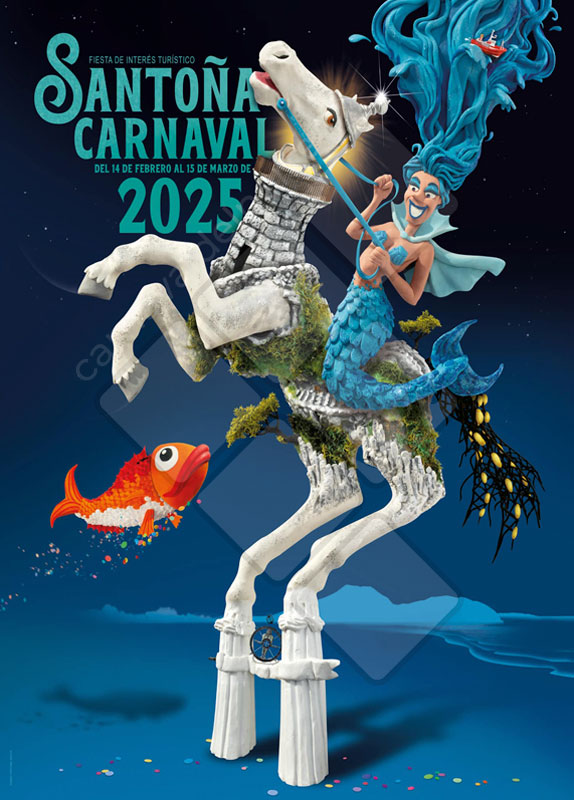"...We know that the sympathetic peñas santoñesas are committed to the task of restoring to the town the Carnival festivities with that street and multitudinous character of yesteryear...".
The resurgence of a popular festival
The rebirth of the street carnival in Santoña took place in the year 1981 at the initiative of the local peñas, who knew how to lead the popular impulse in the recovery of the festival. In this sense, on February 12 of that year, in the section of the newspaper Alert titled "El Espejo", express mention was made of this fact: "We know that the sympathetic clubs of Santoña are committed to the task of restoring the festivities in the town. of the Carnival with that street and multitudinous character of yesteryear, and that they take the steps to achieve it before the competent authorities.
With this note, Don Tertulio echoed a concern that would translate into what is today the Carnival of Santoña, on whose origins we have written the following paragraphs:
In 1981, although there was no official carnival, the people of Santoña disguised themselves, in most cases, privately in the premises of the peñas to celebrate the festivities, but at a certain moment those closed venues could not contain the explosion of joy and revelry and spontaneously the Plaza de San Antonio became, in the blink of an eye, a meeting point for costumes and songs.
The following year's carnival already appeared perfectly regulated in three angular sections: the costume parade, the murgas and the Judgment at the bottom of the sea, activities that later, in 1985, coinciding with its declaration as a Festival of National Tourist Interest , would be added the Proclamation, the Cultural Days, the election of Queen of Carnival and the Night Mora.
From that moment and on those foundations, the Santones carnival has grown in spectacularity, to the point of being considered one of the most representative of the North of Spain and, as such, it has been able to gather around its celebration to thousands of people from other parts of our geography.
And we find ourselves today ...
that after that cautious resurgence there has been a true explosion of Carnival and its activities. The importance of the acts and performances during these dates is contrasted with the attention paid to them in various media. In this sense, different television channels have repeatedly broadcast extensive reports on the development of the parades, the representation of the Trial at the bottom of the sea and the murgas competitions.
On the other hand, since our carnivals of National Tourist Interest were awarded the category in 1985, we have become increasingly prominent and the rest of our geography focuses more on us. For all this, the external projection as a way of knowing our products and economic possibilities should be one more incentive for those who are in a position to take advantage of the publicity that is transmitted.
Let's not forget that our point of contact with other provinces is based on these festivities and the assessment that is made of us depends on the quality with which we present our work.
In this year we intend to lay the foundations of what will be our letter of presentation at the VIII International Carnival Congress to be held in Cádiz in 1997.
In addition, the need to develop research processes, documentation, publications, build facilities , stages, lighting, stands ..., it requires all possible help.
For all these reasons, we ask for your collaboration in the launch of these activities so that they increasingly achieve greater brilliance and spectacularity, with the consequent benefit for all of us.
As of 1996 the carnival continued to improve in quality, the murgas went to the sports center where the occupation would be greater since the capacity was more or less around 2000 people, continued to grow not without difficulty, since today since today all the nearby towns have their own carnival.














